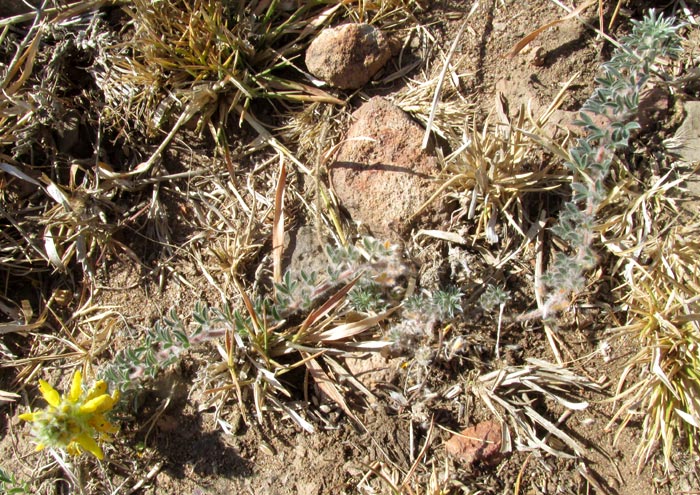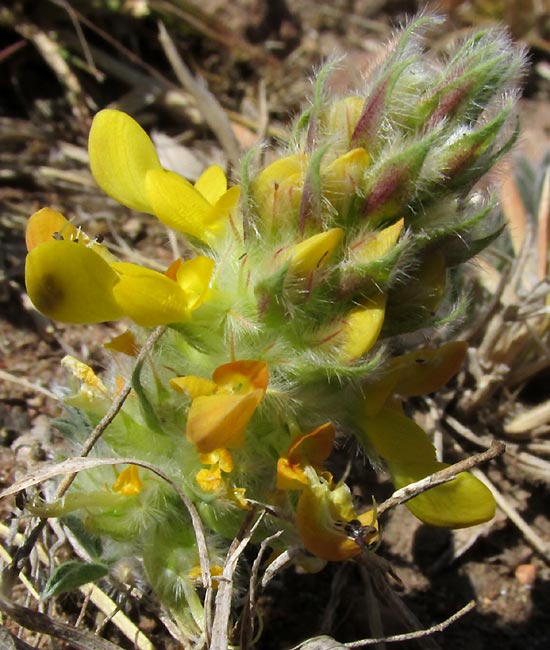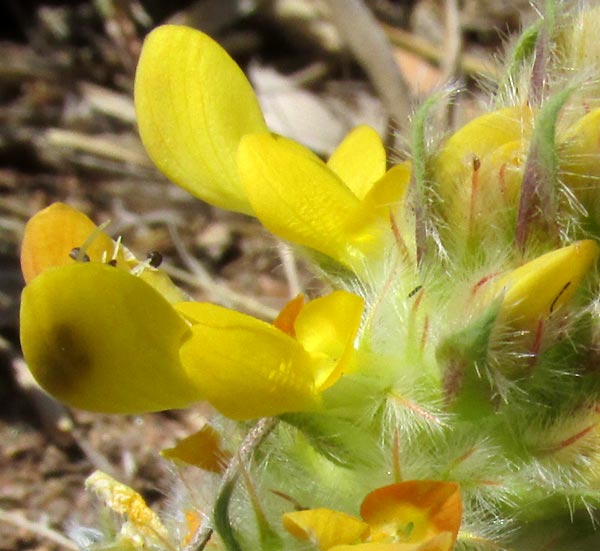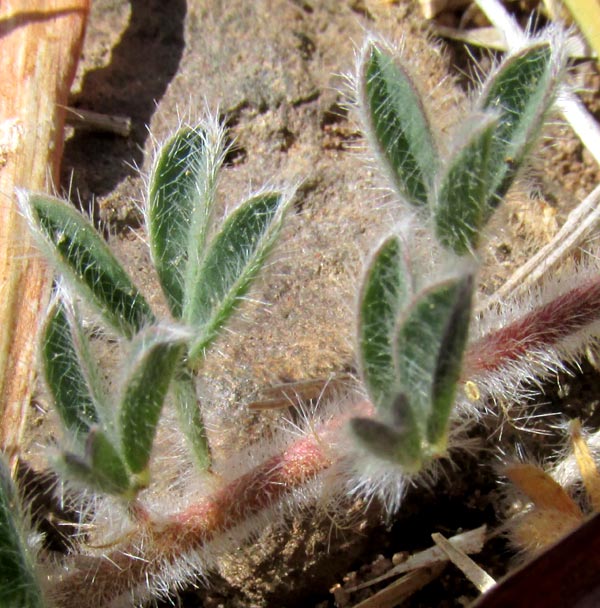Excerpts from Jim Conrad's
Naturalist Newsletter
entry dated April 22, 2022, issued from near Tequisquiapan, elevation about 1,900m (6200 ft), ~N20.57°, ~ W99.89°, Querétaro state, MÉXICO
ARRASTRADILLA PRAIRIE CLOVER

In thin, rocky, dried-out, abused-for-centuries soil supporting such a meager covering of crispy, late-dry-season herbage that even the goat-herders avoid the area, a small splash of yellow caught my attention, hiding at the lower, left in the above picture. The plant was so well camouflaged that I hardly noticed what was so unusual about it: Its body sprawls across the ground, keeping so low that a nibbling herbivore might not notice it. The body is somewhat tough, though, an herbaceous perennial. On hands and knees, I saw that the yellow flowers were stacked atop one another in a spike or spike-like infloresence:

A close look at the flowers showed papilionaceous blossoms typical of the Bean Family. These particular flowers bore side-petals, or wings, disproportionately large for such small top and bottom petals, the standard and keel. Eye-catching was the dense covering of long, white hairs on the calyx.

The sprawling stem and leaves were even more densely hairy:

I assumed that any plant occupying such a disturbed, weedy site would be like most weeds, widely distributed and probably invasive from another country. However, this proved to be DALEA PROSTRATA, an endemic Mexican species. The species is known by no English name, but in Spanish is called Arrastradilla, which translates very roughly to "little thing dragged across the ground." If the genius who named the sublimely spiny Pisonia aculeata "Pull Back & Hold" were consulted, he or she might call our plant "Laid-out-low-&-long." It has no such English name, however, because it's endemic just to northern and central Mexico. Members of the genus Dalea often are known as prairie clovers.
Throughout its distribution area Arrastradilla often is frequent, even abundant, in pastures, dry scrub and arid disturbed areas. It's so low profile that no traditional uses are mentioned for it, though prairie clovers in general are known often to produce good grazing, and to stabilize soil in areas vulnerable to wind and rain erosion.